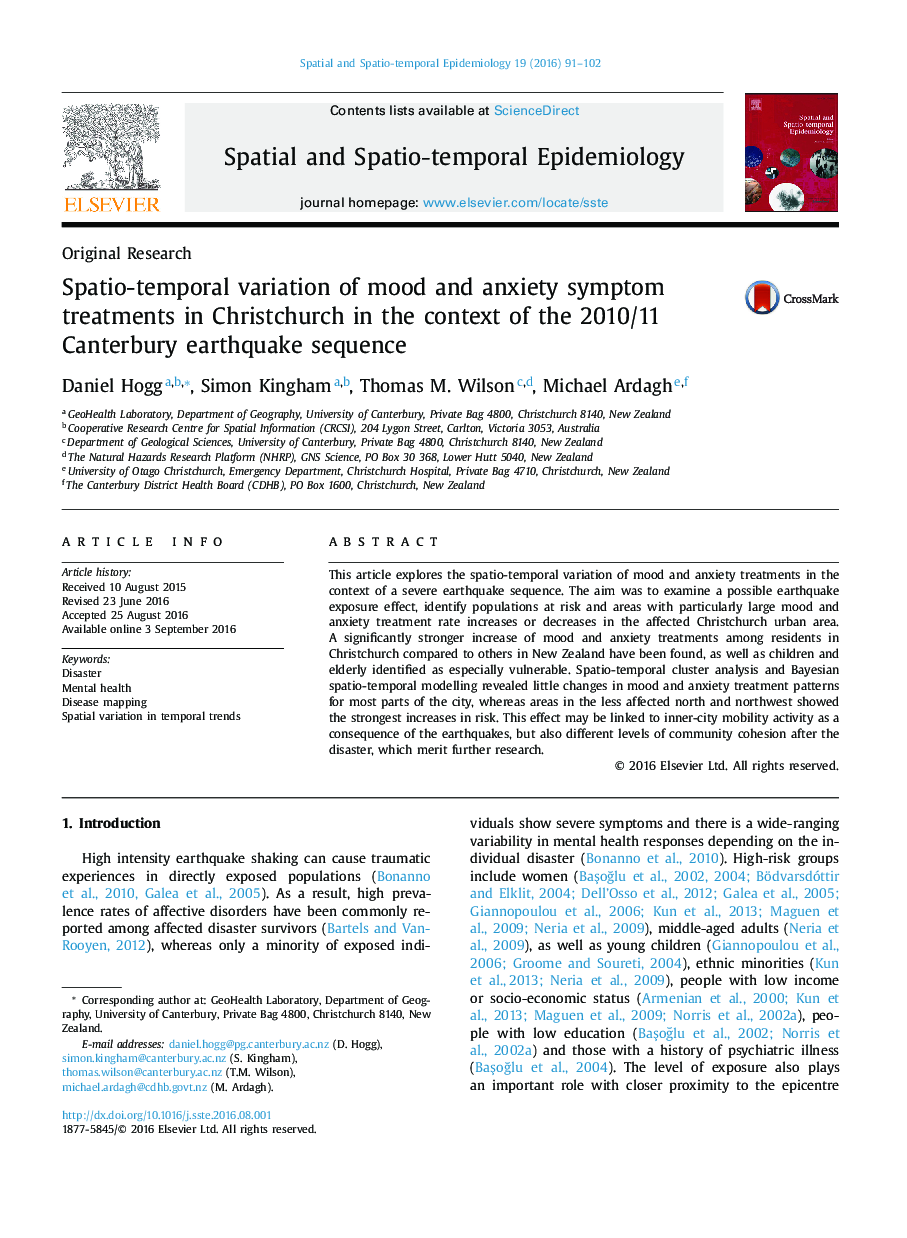| Article ID | Journal | Published Year | Pages | File Type |
|---|---|---|---|---|
| 5118958 | Spatial and Spatio-temporal Epidemiology | 2016 | 12 Pages |
â¢Earthquake-exposure effect on mood/anxiety found among Christchurch residents.â¢Children and elderly showed strongest risk increases for mood/anxiety.â¢Spatial mood/anxiety patterns in Christchurch mostly stayed the same.â¢Increases in risk were found in less affected northern suburbs.
This article explores the spatio-temporal variation of mood and anxiety treatments in the context of a severe earthquake sequence. The aim was to examine a possible earthquake exposure effect, identify populations at risk and areas with particularly large mood and anxiety treatment rate increases or decreases in the affected Christchurch urban area. A significantly stronger increase of mood and anxiety treatments among residents in Christchurch compared to others in New Zealand have been found, as well as children and elderly identified as especially vulnerable. Spatio-temporal cluster analysis and Bayesian spatio-temporal modelling revealed little changes in mood and anxiety treatment patterns for most parts of the city, whereas areas in the less affected north and northwest showed the strongest increases in risk. This effect may be linked to inner-city mobility activity as a consequence of the earthquakes, but also different levels of community cohesion after the disaster, which merit further research.
